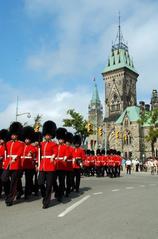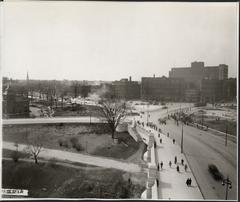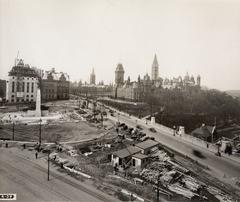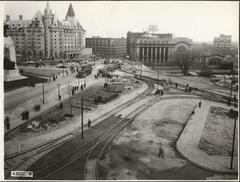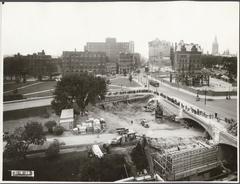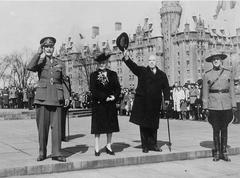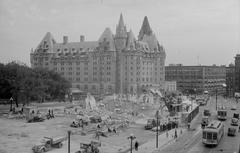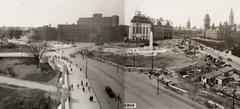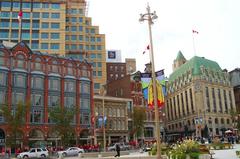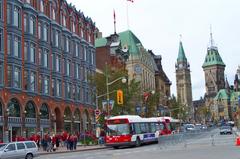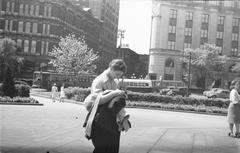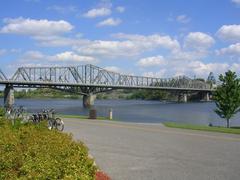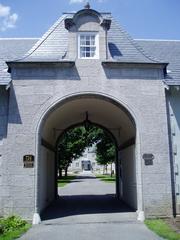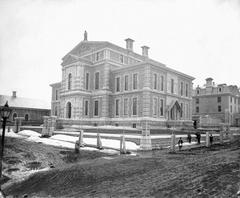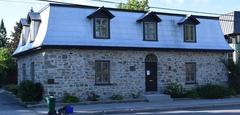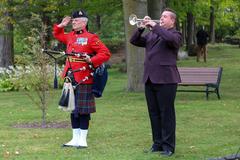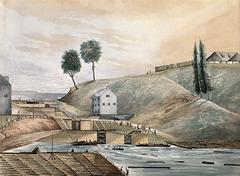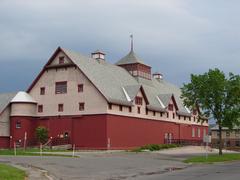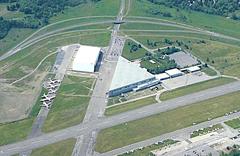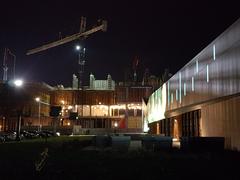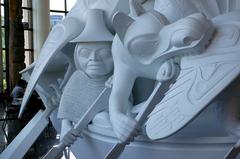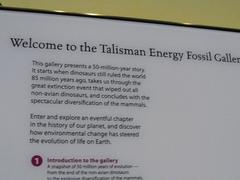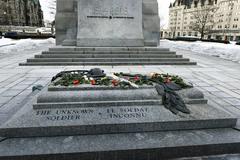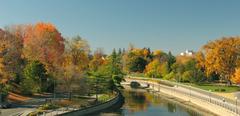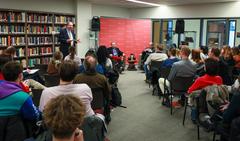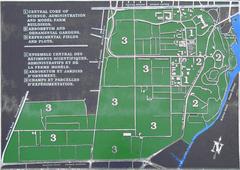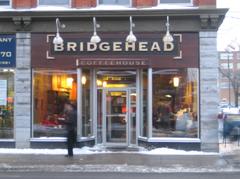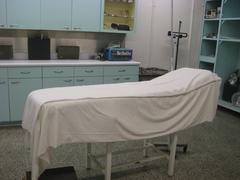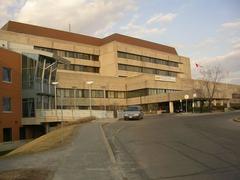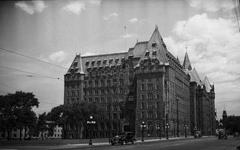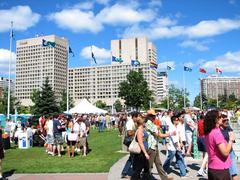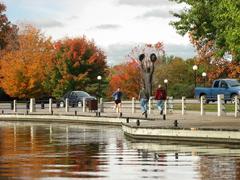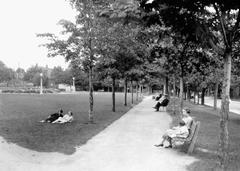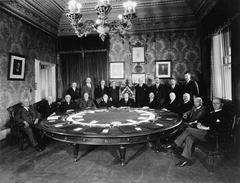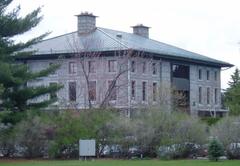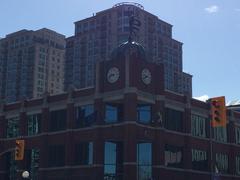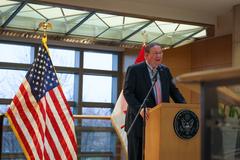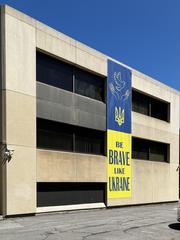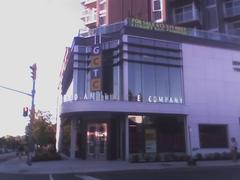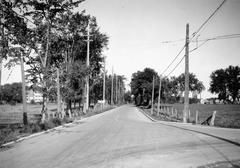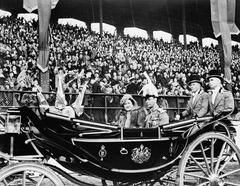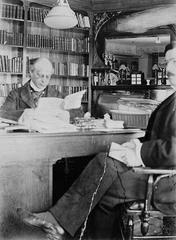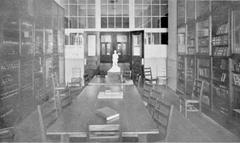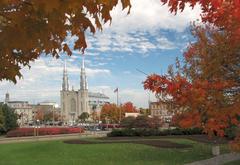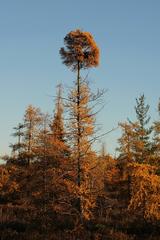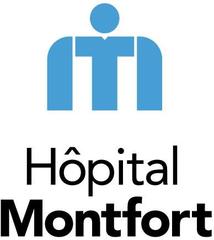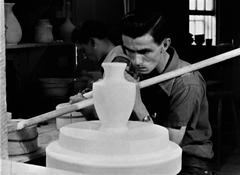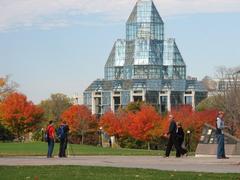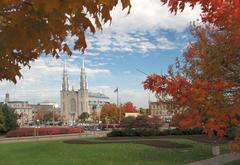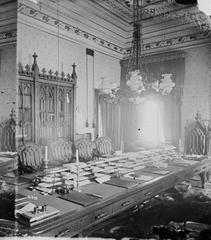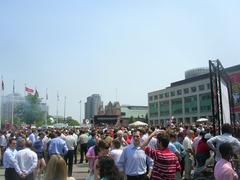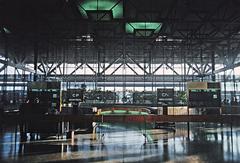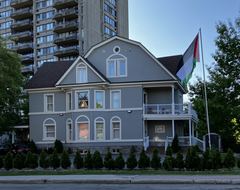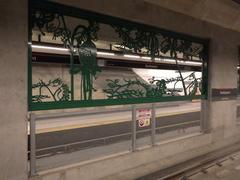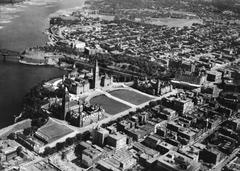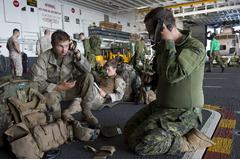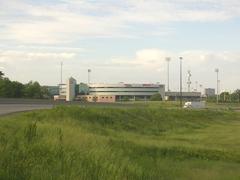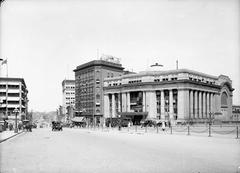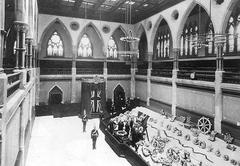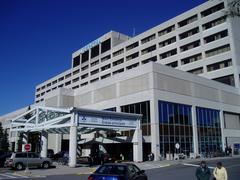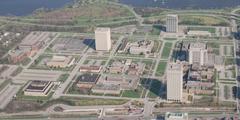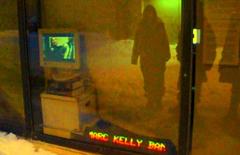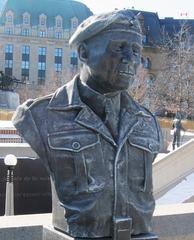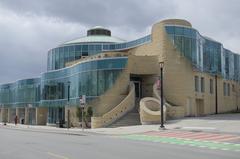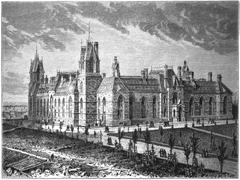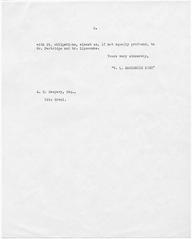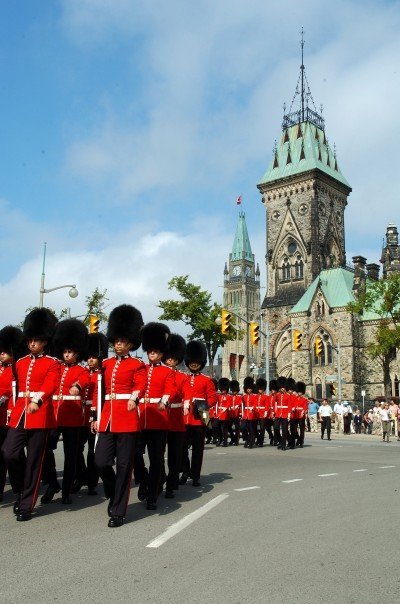
Confederation Square Ottawa Visiting Hours Tickets and Visitor Guide
Date: 14/06/2025
Introduction to Confederation Square Ottawa including its history and cultural significance
Confederation Square in Ottawa stands as a significant national landmark that embodies Canada’s rich history, cultural identity, and architectural heritage. Situated at the intersection of Elgin, Wellington, and Mackenzie streets, this open public space serves as the symbolic heart of Canada’s capital, offering visitors an immersive experience into the country’s past and present. Originally part of Ottawa’s early urban grid adjacent to the Rideau Canal, Confederation Square was transformed in the 1930s following the devastating 1916 fire of the Centre Block on Parliament Hill. Influenced by the City Beautiful movement, urban planners envisioned the square as a grand ceremonial space reflecting Canada’s growing national identity (The Canadian Encyclopedia; Ottawa.ca).
At the core of the square stands the National War Memorial, unveiled in 1939 and designed by British sculptor Vernon March. This imposing granite arch with bronze figures commemorates Canadians who served in World War I and subsequent conflicts, making it a focal point for national remembrance ceremonies such as Remembrance Day (OttawasBestPlaces.com). The addition of the Tomb of the Unknown Soldier in 2000 and the Valiants Memorial in 2006 have further enriched the square’s commemorative significance.
Surrounded by architecturally distinguished landmarks like Parliament Hill’s Gothic Revival edifices, the Château Laurier hotel, the National Arts Centre’s modernist structure, and the historic Confederation Building, Confederation Square serves as a nexus of civic, cultural, and political life in Ottawa (melaniewright.ca; ottawa-future.com). It welcomes visitors year-round without admission fees, offering full accessibility, guided tours, and easy transit connections.
This comprehensive visitor’s guide aims to provide essential information on visiting hours, tickets, accessibility, special events, nearby attractions, and historical insights, empowering travelers to fully appreciate the profound cultural and architectural heritage of Confederation Square in Ottawa (traveladdictedunicorn.com; Evendo).
Table of Contents covering visiting hours ticket information guided tours nearby attractions and travel tips
- Introduction
- Early Foundations and Urban Development
- Creation of Confederation Square
- The National War Memorial: Centerpiece of Remembrance
- Evolution of the Square: Monuments, Memorials, and Urban Renewal
- Architectural and Cultural Context
- Visiting Confederation Square: Hours, Tickets, and Accessibility
- Visiting Hours
- Tickets
- Accessibility
- Travel Tips
- Nearby Attractions and Special Events
- Frequently Asked Questions (FAQ)
- Conclusion
Introduction
Confederation Square is a must-visit historical site located in the heart of Ottawa, Canada’s capital city. Known for its rich history, iconic monuments, and vibrant civic life, it offers visitors a unique glimpse into Canada’s past and present. This guide provides essential information on visiting hours, tickets, accessibility, and nearby attractions, alongside a detailed historical overview to help you make the most of your visit.
Early Foundations and Urban Development
Confederation Square occupies a central and symbolic location in Ottawa, Canada’s capital. The area’s history is deeply intertwined with the city’s evolution from a lumber town to the seat of national government. Ottawa itself was founded in the early 19th century, with its selection as the capital by Queen Victoria in 1857 marking a pivotal moment in Canadian history (The Canadian Encyclopedia). The land that would become Confederation Square was originally part of the city’s early street grid, adjacent to the Rideau Canal, which opened in 1832 and played a crucial role in Ottawa’s growth and strategic importance.
By the late 19th and early 20th centuries, the area around what is now Confederation Square was a bustling urban hub, featuring commercial buildings, hotels, and transportation links. The square’s location at the intersection of Elgin, Wellington, and Mackenzie streets made it a natural gathering place and a focal point for civic life (Ottawa.ca).
Creation of Confederation Square
The concept of Confederation Square as a ceremonial and commemorative space emerged in the early 20th century. The devastating fire of 1916 that destroyed the original Centre Block of Parliament Hill prompted a broader reimagining of Ottawa’s core. Urban planners and architects, influenced by the City Beautiful movement, envisioned a grand public square that would reflect Canada’s growing national identity.
The transformation of the area into Confederation Square was formalized in the 1930s. The square was designed to serve as a monumental civic space, harmonizing with the surrounding historic architecture, including Parliament Hill, the Château Laurier Hotel, and the Central Post Office. The square’s layout was intended to provide clear sightlines to these landmarks, reinforcing its role as the symbolic heart of the capital (melaniewright.ca).
The National War Memorial: Centerpiece of Remembrance
At the heart of Confederation Square stands the National War Memorial, one of Canada’s most significant monuments. The memorial was conceived after World War I as a tribute to Canadians who served and died in the conflict. A design competition was held, and the winning entry was submitted by English sculptor Vernon March. Although March died in 1930, his family completed the bronze statues, which were shipped to Canada for assembly (OttawasBestPlaces.com).
The National War Memorial was officially unveiled in 1939 by King George VI, just months before the outbreak of World War II. Originally dedicated to the fallen of World War I, the memorial has since been rededicated to honor all Canadians who have died in military service. The monument features a granite arch topped by allegorical figures of Peace and Freedom, with bronze statues representing the branches of the Canadian military passing through the arch. The memorial’s prominent location and powerful symbolism have made it the focal point for national Remembrance Day ceremonies and other commemorative events (OttawasBestPlaces.com).
Evolution of the Square: Monuments, Memorials, and Urban Renewal
Confederation Square has evolved over the decades to reflect Canada’s changing identity and values. In 2000, the Tomb of the Unknown Soldier was added directly in front of the National War Memorial. The remains of an unidentified Canadian soldier, repatriated from a cemetery near Vimy Ridge in France, were interred in a solemn state funeral. The tomb serves as a poignant symbol of sacrifice and has become a site of pilgrimage, especially during Remembrance Day, when it is covered with poppies and other tributes (OttawasBestPlaces.com).
The square is also home to the Valiants Memorial, unveiled in 2006, which features 14 life-size bronze statues of notable figures from Canadian military history. These monuments, along with nearby plaques and interpretive panels, contribute to the square’s role as a living memorial and educational space (OttawasBestPlaces.com).
Urban renewal projects in the late 20th and early 21st centuries have enhanced the square’s accessibility and aesthetic appeal. Improvements include landscaping, pedestrian pathways, and lighting to ensure Confederation Square remains both a ceremonial space and a welcoming public plaza.
Architectural and Cultural Context
Confederation Square is surrounded by some of Ottawa’s most iconic buildings, each adding to the area’s historical and architectural significance. To the north lies Parliament Hill, with its Gothic Revival architecture and the Peace Tower rising 92 meters above the city (melaniewright.ca). The Château Laurier Hotel, completed in 1912, is a striking example of the French Gothic style and has hosted countless dignitaries and events.
The National Arts Centre, opened in 1969, offers a modernist contrast to the square’s older structures. Its clean lines and open spaces reflect the evolution of Canadian architecture and the blending of past and present in Ottawa’s urban landscape (melaniewright.ca). The Central Post Office and the Senate of Canada Building anchor the square firmly in the city’s civic and political life.
Confederation Square has been designated a National Historic Site of Canada, recognizing its importance as a ceremonial and commemorative space at the heart of the nation (OttawasBestPlaces.com).
Visiting Confederation Square: Hours, Tickets, and Accessibility
Visiting Hours
Confederation Square is an open public space accessible year-round. While there is no ticket required to enter the square itself, specific nearby attractions such as the National War Memorial and associated visitor centers have typical visiting hours from 9:00 AM to 5:00 PM daily. It is advisable to check current hours before your visit, especially during holidays or special events.
Tickets
Admission to Confederation Square is free since it is a public outdoor space. However, guided tours that include the square and surrounding landmarks may require tickets or reservations. Visitors interested in such tours can book through local tour operators or the official Ottawa tourism website.
Accessibility
Confederation Square is wheelchair accessible, with smooth pedestrian pathways and ramps where necessary. Seating areas are available throughout the square, and accessible washrooms can be found nearby. Visitors with mobility challenges will find the square easy to navigate.
Travel Tips
- The square is best accessed by public transit, with numerous bus stops nearby and the downtown Ottawa transitway within walking distance.
- Parking is limited around the square; visitors are encouraged to use public transportation or nearby parking facilities.
- The square is a popular spot for photography, especially during national ceremonies and seasonal events.
Nearby Attractions and Special Events
Confederation Square is close to many other Ottawa landmarks including Parliament Hill, the National Gallery of Canada, and the ByWard Market. Visitors can easily combine a visit to the square with exploring these sites.
Special events held at Confederation Square include Remembrance Day ceremonies, Canada Day celebrations, cultural festivals, and occasional art installations. Check local event calendars for dates and details.
Suggested Visuals and Media
- High-quality images of the National War Memorial and Tomb of the Unknown Soldier with alt tags like “National War Memorial at Confederation Square Ottawa”.
- Maps showing Confederation Square’s location relative to Ottawa’s downtown landmarks.
- Virtual tour links or video clips of Remembrance Day ceremonies.
Frequently Asked Questions (FAQ)
Q: Is there an entrance fee to visit Confederation Square? A: No, Confederation Square is a public space and free to visit.
Q: What are the best times to visit Confederation Square? A: The square is open year-round, but spring to fall offers the best weather for walking tours and photography.
Q: Are guided tours available? A: Yes, several guided tours include Confederation Square and nearby landmarks. Tickets can be purchased through Ottawa tourism websites or operators.
Q: Is Confederation Square wheelchair accessible? A: Yes, the square has accessible pathways and facilities.
Q: Can I attend Remembrance Day ceremonies at Confederation Square? A: Absolutely. The square hosts annual Remembrance Day ceremonies that are open to the public.
Conclusion
Confederation Square in Ottawa is both a living memorial and a vibrant public space that captures the spirit of Canada’s history and identity. Whether you are visiting to explore its rich historical monuments, attend a national event, or simply enjoy a stroll through the capital’s heart, the square offers something meaningful for every visitor.
Plan your visit by checking current visiting hours, consider joining a guided tour for deeper insights, and don’t forget your camera to capture the stunning architectural and commemorative features. For more information and updates, explore related posts on Ottawa’s historical sites and follow official tourism channels.
Call to Action: Download the Audiala app today to access guided audio tours of Confederation Square and other Ottawa landmarks. Stay connected with us on social media for the latest event news, travel tips, and more inspiring stories about Canada’s capital.
Visiting Confederation Square in Ottawa: Hours, Tickets, and Historical Highlights
Introduction
Confederation Square is one of Ottawa’s most iconic historical sites, blending architectural grandeur with rich cultural significance. This article will guide you through the square’s architectural highlights, cultural importance, and practical visitor information, including visiting hours, ticketing details, and transport options. Whether you’re a history buff, architecture enthusiast, or casual traveler, discover why Confederation Square is a must-visit destination in Canada’s capital.
Architectural Significance of Confederation Square
Urban Design and Spatial Context
Confederation Square is a pivotal urban space in Ottawa, serving as a central hub that connects several of the city’s most important streets and landmarks. Its location at the intersection of Wellington Street, Elgin Street, and Mackenzie Avenue places it at the heart of the capital’s ceremonial and governmental district (traveladdictedunicorn.com). The square’s open, triangular layout is designed to accommodate large gatherings, ceremonies, and processions, reinforcing its role as a civic and commemorative space.
The square’s spatial arrangement is deliberate: it is flanked by some of Ottawa’s most architecturally significant buildings, including the Parliament Buildings to the west, the Château Laurier hotel to the north, the National Arts Centre to the south, and the Confederation Building to the northwest. This ensemble creates a visually cohesive and symbolically rich environment, with Confederation Square acting as the connective tissue between these national icons.
The National War Memorial: Centerpiece of the Square
At the heart of Confederation Square stands the National War Memorial, one of Canada’s most revered monuments. Designed by British sculptor Vernon March and unveiled in 1939, the memorial is an imposing granite arch surmounted by bronze figures representing the response of Canadians to war. The monument rises to a height of 21.34 meters (70 feet) and features 22 bronze figures, including infantrymen, nurses, and aviators, symbolizing the diversity of Canadians who served in times of conflict (traveladdictedunicorn.com).
The memorial’s architectural style is a blend of classical and modern elements, with the arch evoking triumphal monuments of antiquity while the dynamic, forward-moving figures convey a sense of progress and sacrifice. The Tomb of the Unknown Soldier, added in 2000, lies at the base of the memorial, further enhancing its symbolic significance as a site of national remembrance.
Confederation Building: Gothic Revival Heritage
Dominating the western edge of Confederation Square is the Confederation Building, an outstanding example of early 20th-century Gothic Revival architecture. Constructed between 1927 and 1931, the building was designed by architect Clarence Burritt to complement the nearby Parliament Buildings (ottawa-future.com). Its V-shaped plan, rustic stone cladding, copper roof, and numerous turrets and dormer windows give it a castle-like appearance, often leading visitors to mistake it for the nearby Château Laurier hotel.
The building’s façades are adorned with patriotic symbols reflecting Canada’s multicultural heritage, including the fleur-de-lis, rose, thistle, shamrock, and maple leaf. These elements represent French, English, Scottish, and Irish influences, respectively, and underscore the building’s role as a symbol of national unity (ottawa-future.com). The Confederation Building was designated a heritage site in 1988, and its exterior has remained virtually unchanged since its completion, with careful restoration efforts ensuring the preservation of its original materials and details.
National Arts Centre: Modernist Contrast
On the southern edge of Confederation Square stands the National Arts Centre (NAC), a striking example of Brutalist architecture. Completed in 1969 as part of Canada’s centennial celebrations, the NAC was designed by Fred Lebensold and the Montreal-based firm Arcop (eraarch.ca). Its robust geometric forms and fortress-like appearance provide a modernist counterpoint to the Gothic Revival and Beaux-Arts buildings surrounding the square.
The NAC’s design emphasizes the importance of the arts in Canadian identity, and its recent renovations have enhanced its connection to Confederation Square, creating new public spaces and improving accessibility. The building’s presence on the square reinforces the area’s role as a center for both civic and cultural life.
Symbolism and National Identity
Confederation Square is more than just an architectural showcase; it is a symbolic landscape that embodies Canadian values and history. The square’s monuments and buildings collectively narrate the story of Canada’s evolution as a nation, from its colonial roots to its emergence as a multicultural democracy.
The National War Memorial and Tomb of the Unknown Soldier serve as focal points for national remembrance, particularly on Remembrance Day (November 11th), when thousands gather to honor the sacrifices of Canadian soldiers (traveladdictedunicorn.com). The square’s role as a gathering place for public ceremonies, protests, and celebrations underscores its significance as a space for democratic expression and collective memory.
The architectural diversity of the square’s surroundings—from the Gothic Revival Parliament and Confederation Buildings to the modernist National Arts Centre—reflects the pluralism and dynamism of Canadian society. The use of national symbols in architectural ornamentation reinforces the square’s function as a site of unity and pride.
Cultural Significance and Activities
Ceremonial and Civic Functions
Confederation Square is Ottawa’s principal site for national ceremonies and public gatherings. It is the epicenter of Remembrance Day commemorations, which attract dignitaries, veterans, and citizens from across the country. The square also hosts celebrations on Canada Day (July 1st), featuring concerts, parades, and fireworks that draw tens of thousands of visitors (theplanetd.com).
Throughout the year, Confederation Square is a venue for cultural festivals, protests, and spontaneous gatherings, reflecting its status as a living, democratic space. Its central location and open design make it accessible and inviting for both locals and tourists.
Integration with Ottawa’s Cultural Landscape
Confederation Square is seamlessly integrated into Ottawa’s broader cultural landscape. It is within walking distance of major attractions such as the ByWard Market, the National Gallery of Canada, and the Canadian Museum of History (accessible via the Alexandra Bridge) (theplanetd.com). The square’s proximity to these institutions enhances its role as a starting point for exploring the city’s rich artistic and historical offerings.
The square also serves as a node in Ottawa’s network of green spaces, with nearby parks such as Major’s Hill Park providing opportunities for relaxation and recreation. The Rideau Canal, a UNESCO World Heritage Site, runs adjacent to the square, offering scenic views and seasonal activities such as boating in summer and ice skating in winter (traveladdictedunicorn.com).
Artistic and Community Events
Confederation Square and its surroundings are frequent sites for public art installations, performances, and community events. The National Arts Centre, in particular, hosts a diverse array of concerts, theater productions, and festivals, contributing to the vibrancy of the area (eraarch.ca). During the summer months, the square and nearby venues feature outdoor concerts, art crawls, and pop-up markets, attracting both residents and visitors (todocanada.ca).
The square’s role as a cultural crossroads is further enhanced by its accessibility: it is easily reached on foot from downtown hotels, public transit stops, and major tourist attractions. This makes it an ideal gathering place for events that celebrate Ottawa’s diverse communities and creative spirit.
Preservation and Heritage Value
Confederation Square’s designation as a National Historic Site of Canada underscores its importance as a heritage landscape. Preservation efforts focus on maintaining the integrity of its monuments, buildings, and public spaces, ensuring that future generations can continue to experience its historical and cultural resonance (ottawa-future.com).
The square’s ongoing relevance is maintained through adaptive reuse and sensitive restoration of its architectural landmarks, as well as through programming that engages the public in the ongoing story of Canada’s capital.
Visitor Information
Visiting Hours and Tickets
Confederation Square is a public outdoor space and is open year-round, 24 hours a day. There is no admission fee or tickets required to visit the square or its monuments, including the National War Memorial and Tomb of the Unknown Soldier. However, some nearby attractions like the National Arts Centre and Parliament Buildings have their own hours and ticketing policies.
How to Get There
Confederation Square is centrally located in downtown Ottawa and is easily accessible by public transportation. The O-Train Confederation Line serves nearby stations such as Parliament and Rideau. Numerous bus routes also stop within walking distance. For those driving, parking is available in nearby public parking lots and garages, though spaces can be limited during special events.
COVID-19 Guidelines
Visitors are encouraged to check current COVID-19 guidelines before visiting, as protocols may vary for nearby indoor venues. Outdoor areas like Confederation Square generally have no restrictions, but practicing physical distancing and wearing masks during crowded events is recommended.
Practical Visitor Tips for Experiencing Confederation Square’s Significance
- Best Times to Visit: Confederation Square is especially vibrant during national holidays like Canada Day and Remembrance Day, when special events are held. Early mornings and evenings provide quieter moments ideal for reflection and photography.
- Guided Tours: Many walking tours of Ottawa include Confederation Square, offering in-depth commentary on its history and architecture. Self-guided tours are also available, supported by interpretive plaques and mobile apps.
- Unique Photo Spots: Popular photo opportunities include views of the National War Memorial framed by Parliament Hill, the Gothic Revival details of the Confederation Building, and the modernist lines of the National Arts Centre.
- Nearby Amenities: The ByWard Market area nearby offers numerous cafes, restaurants, and shops. Public washrooms are accessible in the National Arts Centre and the Rideau Centre.
- Safety and Etiquette: As a site of remembrance and civic pride, visitors should be respectful, particularly around the National War Memorial and during official ceremonies.
Frequently Asked Questions (FAQ)
Q: What are the visiting hours of Confederation Square? A: Confederation Square is an open public space accessible 24/7 year-round.
Q: Is there an entry fee or tickets required? A: No, there is no admission fee or ticket requirement to visit Confederation Square or its monuments.
Q: Are guided tours available? A: Yes, various walking tours include Confederation Square, and self-guided options are supported by plaques and apps.
Q: What are the best times to visit? A: National holidays and event days, such as Canada Day and Remembrance Day, offer vibrant experiences, while early mornings and evenings are quieter.
Visuals and Media Suggestions
To enhance your visit, consider viewing high-quality images and virtual tours available on official Ottawa tourism websites and related historical archives. Look for photos showcasing architectural details and panoramic views of the square with the Parliament Buildings in the background.
Related Articles
Call to Action
Plan your visit to Confederation Square today! For up-to-date event schedules, guided tour bookings, and accessibility information, visit the official Ottawa tourism website. Download the Audiala app for interactive self-guided tours and follow our social media channels for the latest news on Ottawa’s historical sites and cultural events.
Introduction
Confederation Square in Ottawa is one of Canada’s most iconic public spaces, rich in history, culture, and architectural beauty. Whether you’re a history buff, a casual tourist, or someone seeking a meaningful experience, this square offers a unique glimpse into Canada’s heritage. This guide covers key attractions, visiting hours, ticket information, accessibility, and tips to help you make the most of your visit to Confederation Square.
Key Attractions Within Confederation Square
The National War Memorial and Tomb of the Unknown Soldier
At the heart of Confederation Square stands the National War Memorial, one of Canada’s most significant monuments. Unveiled in May 1939 by King George VI, the memorial is a towering granite arch adorned with 22 bronze figures representing the branches of the Canadian military in World War I, later rededicated to honor all Canadians who have served in subsequent conflicts (traveladdictedunicorn.com). The figures symbolize the unity and sacrifice of Canadian forces. In front lies the Tomb of the Unknown Soldier, a solemn granite sarcophagus containing the remains of an unidentified Canadian soldier from World War I, representing all those who died in service without a known grave.
- Visiting Hours: The memorial and tomb are accessible year-round, 24/7, as they are outdoor monuments.
- Tickets: Free to visit.
- Accessibility: Fully accessible with paved pathways.
The site is the focal point for Canada’s annual Remembrance Day ceremonies every November 11th, drawing thousands of visitors and dignitaries. Visitors are encouraged to observe a moment of reflection where fresh poppies are often left in tribute.
The Valiants Memorial
Located on the periphery of Confederation Square, the Valiants Memorial was unveiled in 2006. It features nine busts and five statues commemorating fourteen key figures from Canadian military history, spanning from the French Regime to the Second World War.
- Visiting Hours: Open year-round.
- Tickets: Free.
- Accessibility: Easy access with nearby sidewalks.
Interpretive plaques accompany each figure, providing educational insights into Canada’s military heritage.
Architectural Landmarks Framing the Square
Confederation Square is framed by several landmark buildings that showcase over a century of Canadian architectural evolution (Parks Canada). Many are designated National Historic Sites.
Château Laurier
The Fairmont Château Laurier, completed in 1912, is an iconic French Château-style hotel with over 400 rooms. Visitors can explore its public spaces and appreciate its historic grandeur.
- Visiting Hours: Hotel lobby and public areas are open daily.
- Tickets: No admission fee; hotel services have fees.
Senate of Canada Building (Former Union Station)
Built in 1912, this Beaux-Arts building now houses the Senate of Canada. Guided tours are available when the Senate is in session.
- Visiting Hours: Tours generally available Monday to Friday, 10:00 AM–4:00 PM.
- Tickets: Free, but advance booking recommended.
National Arts Centre (NAC)
Opened in 1969, the National Arts Centre is a Brutalist architectural landmark hosting performances year-round.
- Visiting Hours: Lobby and terrace open daily; box office hours vary.
- Tickets: Vary by performance; some public events are free.
Central Chambers and Scottish Ontario Chambers
These late 19th-century buildings on Elgin Street feature Queen Anne Revival and Italianate styles, respectively, and now house offices.
- Visiting Hours: Exterior viewing only.
Central Post Office
The Central Post Office (1939) is an Art Deco landmark still functioning as a post office.
- Visiting Hours: Typically 8:00 AM–5:00 PM, Monday to Friday.
Office of the Prime Minister and Privy Council (Langevin Block)
A Second Empire-style building completed in 1889, it houses Canada’s executive offices.
- Visiting Hours: Not open to the public.
East Block of Parliament Buildings
Constructed between 1859–1865, this Gothic Revival building marks the square’s northern boundary.
- Access: Exterior viewing only; interior access limited due to renovations.
The Rideau Canal
Confederation Square sits atop the Rideau Canal, a UNESCO World Heritage Site. The Plaza Bridge spans the canal here, offering scenic views.
- Visiting Hours: Canal pathways accessible year-round.
- Activities: Boating in summer; skating rink in winter.
Ceremonial and Cultural Events
Confederation Square hosts many events throughout the year:
- Remembrance Day (November 11): National ceremonies at the War Memorial.
- Canada Day (July 1): Concerts, parades, fireworks.
- Ottawa Jazz Festival (June): Held in nearby Confederation Park.
Public art installations, protests, and seasonal festivities also animate the square.
Visitor Tips and Accessibility
- Location: Northern end of Elgin Street, southeast of Parliament Hill (Google Maps).
- Accessibility: Fully accessible with ramps and wide pathways.
- Public Washrooms: Available at the National Arts Centre and nearby buildings.
- Best Times to Visit: Early morning or late afternoon for photography; arrive early for major events.
- Parking: Limited metered street parking nearby; public transit recommended.
- Guided Tours: Multiple walking and cycling tours include Confederation Square (Ottawa Tourism).
- Nearby Attractions: Parliament Hill, ByWard Market, National Gallery of Canada—all within 10 minutes’ walk.
Notable Public Art and Memorials
Besides major monuments, the square features plaques and interpretive panels explaining its history. The landscaping reflects City Beautiful movement ideals, with benches and shaded areas ideal for rest and reflection.
Safety and Etiquette
Visitors should respect the solemn nature of the War Memorial and Tomb of the Unknown Soldier. Photography is allowed, but climbing on monuments is prohibited. Follow instructions during official ceremonies.
Frequently Asked Questions (FAQ)
Q: What are Confederation Square’s visiting hours? A: The square and outdoor monuments are open 24/7 year-round.
Q: Is there an admission fee? A: No, visiting Confederation Square and its outdoor monuments is free.
Q: How accessible is Confederation Square? A: The square is fully accessible with ramps and paved pathways.
Q: What are the best times to visit? A: Early morning or late afternoon offer the best lighting and fewer crowds.
Q: Are guided tours available? A: Yes, various walking and cycling tours include Confederation Square.
Conclusion
Confederation Square is a must-visit destination in Ottawa, offering a blend of history, culture, and stunning architecture. Whether you’re attending a ceremony, exploring monuments, or simply enjoying the ambiance, this square provides a meaningful Canadian experience. Plan your visit by checking the latest event schedules and visitor information through official resources.
For more information, visit Ottawa Tourism and Parks Canada.
Ready to explore more of Ottawa? Download the Audiala app for guided tours, insider tips, and updates on local events. Follow us on social media and check out related articles on Ottawa’s historical sites and cultural attractions to plan your perfect trip!
Introduction
Confederation Square is one of Ottawa’s most iconic historical sites and a central hub for national ceremonies, festivals, and community gatherings. Located in the heart of downtown Ottawa, it is home to the National War Memorial and serves as a powerful symbol of Canadian heritage and remembrance. This guide covers everything you need to know about visiting Confederation Square, including visiting hours, ticketing information, accessibility, key annual events, nearby attractions, and travel tips to help you make the most of your visit.
Annual Ceremonies at Confederation Square
National War Memorial Commemorations
Confederation Square hosts the National War Memorial, a major site for Canadian military remembrance. The highlight is the Remembrance Day Ceremony on November 11th, attracting thousands including veterans, dignitaries, and the public. The ceremony features a military parade, wreath laying, a moment of silence at 11:00 a.m., and “The Last Post.” Key figures such as the Governor General and Prime Minister participate, making it a deeply moving tradition broadcast live nationwide (Evendo).
Other important commemorative events include Vimy Ridge Day (April 9), Battle of the Atlantic Sunday (first Sunday in May), and National Peacekeepers’ Day (August 9). These smaller ceremonies maintain a solemn atmosphere honoring Canada’s military history.
Canada Day Celebrations
On July 1st, Confederation Square becomes a vibrant center for Canada Day festivities. Its proximity to Parliament Hill and open layout make it ideal for live music, street performances, cultural showcases, and official ceremonies at the National War Memorial (Canada Day in Ottawa). The square is decorated with Canadian flags and hosts both formal speeches and casual celebrations. Evening fireworks are a highlight, with the square providing excellent viewing.
State Visits and Official Ceremonies
Confederation Square is the preferred site for welcoming foreign dignitaries. Visiting heads of state often begin their visits here by laying wreaths at the National War Memorial, accompanied by military honors and media coverage. These ceremonies offer visitors a unique glimpse into Canada’s diplomatic traditions.
Spontaneous and Community Gatherings
Beyond scheduled events, Confederation Square is a gathering place for spontaneous vigils and community celebrations during times of national significance or tragedy, reflecting its role as a space for public solidarity.
Festivals and Public Events in Confederation Square
Summer Festivals and Cultural Events
Though primarily ceremonial, Confederation Square is often part of the broader festival scene in Ottawa.
Ottawa Jazz Festival
The Ottawa Jazz Festival (June 20–29, 2025) takes place mainly in nearby Confederation Park, with some festival activities spilling into Confederation Square. The event features international artists, workshops, and attracts over 200,000 attendees (Ottawa Jazz Festival).
Capital Pride
During Capital Pride (August 16–24, 2025), Confederation Square serves as a key gathering point for speeches and performances that celebrate Ottawa’s LGBTQ+ community (Capital Pride).
Commemorative and Thematic Events
Indigenous Ceremonies
Located on Algonquin Anishinaabe traditional territory, Confederation Square hosts Indigenous-led events on National Indigenous Peoples Day (June 21), featuring drumming, storytelling, and cultural education.
Peace and Human Rights Events
The square also hosts peace rallies, human rights demonstrations, and international solidarity events, underscoring its symbolic significance.
Visitor Information: Visiting Hours, Tickets, and Accessibility
Visiting Hours
Confederation Square is an open public space accessible year-round, 24 hours a day. However, specific events may have designated times. Visitors are encouraged to check event schedules in advance.
Tickets and Entry Fees
There is no entry fee to visit Confederation Square or the National War Memorial. Most events are free and open to the public, though some festivals nearby may require tickets.
Accessibility
The square is fully accessible, featuring paved walkways and ramps suitable for wheelchairs and strollers. Temporary seating and accessible viewing areas are provided during major events. Nearby public washrooms are accessible, with additional facilities available during large gatherings.
Getting There
Easily reachable on foot from Centretown, Confederation Square is well served by OC Transpo buses (#1 and #7 stop nearby). Parking is limited, especially during events, so public transit or walking is recommended (Evendo).
Amenities and Nearby Attractions
The square is surrounded by cafes, restaurants, and shops. It is within walking distance of major Ottawa landmarks such as Parliament Hill, the National Gallery of Canada, and the Canadian Museum of History. Guided tours often include Confederation Square as a key stop, and the site offers excellent photographic opportunities, especially around the National War Memorial.
Notable Past Events
Confederation Square has been the site of historic national moments, including the 2000 state funeral procession for former Prime Minister Pierre Elliott Trudeau and the 2014 national memorial service for victims of the Parliament Hill shootings.
Event Calendar Highlights (2025)
- Remembrance Day Ceremony: November 11, 2025
- Canada Day Celebrations: July 1, 2025 (Canada Day in Ottawa)
- Capital Pride: August 16–24, 2025 (Capital Pride)
- National Indigenous Peoples Day: June 21, 2025
- Ottawa Jazz Festival: June 20–29, 2025 (Ottawa Jazz Festival)
Visitors should check official websites for the latest updates.
Frequently Asked Questions (FAQs)
Q: What are Confederation Square’s visiting hours? A: The square is open 24/7 year-round as a public space, but event times vary.
Q: Is there an entry fee or ticket required? A: No entry fee is required for the square or most events; some adjacent festivals may charge for specific activities.
Q: Is Confederation Square wheelchair accessible? A: Yes, it features paved paths and ramps, with accessible seating during major events.
Q: What are the must-see events at Confederation Square? A: Key events include the Remembrance Day Ceremony, Canada Day celebrations, and Indigenous Peoples Day.
Q: Are guided tours available? A: Many Ottawa tours include Confederation Square as a highlight — check with local tour providers.
Conclusion and Call to Action
Confederation Square stands as a vital Ottawa historical site and a vibrant center for Canadian remembrance and celebration. Whether attending solemn ceremonies, lively festivals, or spontaneous gatherings, visitors will find a meaningful experience. Plan your visit by checking event schedules, using public transit, and exploring nearby attractions to fully enjoy this iconic location.
For the latest updates and insider tips on Ottawa’s historical sites and events, download the Audiala app, explore our related articles, and follow our social media channels. Stay connected and make the most of your Ottawa visit!
Summary of key points about visiting Confederation Square and tips for planning your visit
Confederation Square remains a vital and dynamic landmark at the heart of Ottawa, encapsulating Canada’s national story through its monuments, architecture, and ceremonial functions. As a living memorial, it honors the sacrifices of Canadian servicemen and women via the National War Memorial and Tomb of the Unknown Soldier, while the Valiants Memorial and surrounding plaques offer rich educational perspectives on military history. The square’s strategic urban design and proximity to historic and cultural institutions such as Parliament Hill, the Château Laurier, and the National Arts Centre showcase Ottawa’s architectural diversity and evolving identity (OttawasBestPlaces.com; melaniewright.ca).
Accessible 24/7 year-round without admission fees, Confederation Square welcomes millions of visitors who come to witness national ceremonies, partake in festivals like Canada Day and the Ottawa Jazz Festival, or simply enjoy the square’s serene yet inspiring atmosphere. Its fully accessible pathways, nearby amenities, and integration with Ottawa’s public transit system make it an inviting destination for all visitors.
Whether attending the solemn Remembrance Day ceremonies, exploring architectural marvels, or strolling through the vibrant downtown core, visitors can experience a profound connection to Canada’s heritage and contemporary cultural life. For up-to-date event schedules, guided tours, and additional visitor resources, travelers are encouraged to consult official Ottawa tourism platforms and leverage tools such as the Audiala app for enriched, interactive experiences (Ottawa Tourism; Audiala app). Confederation Square truly offers a meaningful and memorable window into the spirit of Canada’s capital and nation.
References and links to official Confederation Square website related articles and credible sources
- Confederation Square Ottawa: Visiting Hours, Tickets, and Historical Insights, 2025, Melanie Wright https://melaniewright.ca/exploring-ottawas-historic-architecture-a-blend-of-past-and-present
- Visiting Confederation Square in Ottawa: Hours, Tickets, and Historical Highlights, 2025, Travel Addicted Unicorn https://traveladdictedunicorn.com/is-ottawa-worth-visiting/
- Confederation Square Ottawa: Visiting Hours, Tickets, and Historical Sites Guide, 2025, Ottawa Tourism and Parks Canada https://www.canada.ca/en/parks-canada/news/2016/11/confederation-square-ottawa-ontario.html
- Confederation Square Events and Ceremonies: Visiting Hours, Tickets, and Ottawa Historical Sites Guide, 2025, Evendo https://evendo.com/locations/canada/ottawa/centretown/attraction/confederation-square
- Ottawa Jazz Festival Official Site, 2025 https://ottawajazzfestival.com
- Capital Pride Ottawa, 2025 https://capitalpride.ca/
- Canada Day in Ottawa, 2025 https://www.canada.ca/en/canadian-heritage/campaigns/canada-day.html
- Ottawa Future - Architecture of Ottawa’s Majestic Confederation Building, 2025 https://ottawa-future.com/en/eternal-3835-the-architecture-of-ottawas-majestic-confederation-building
